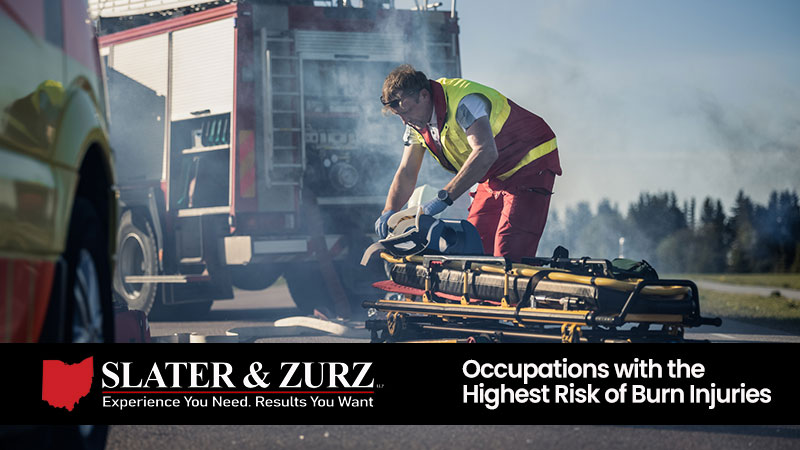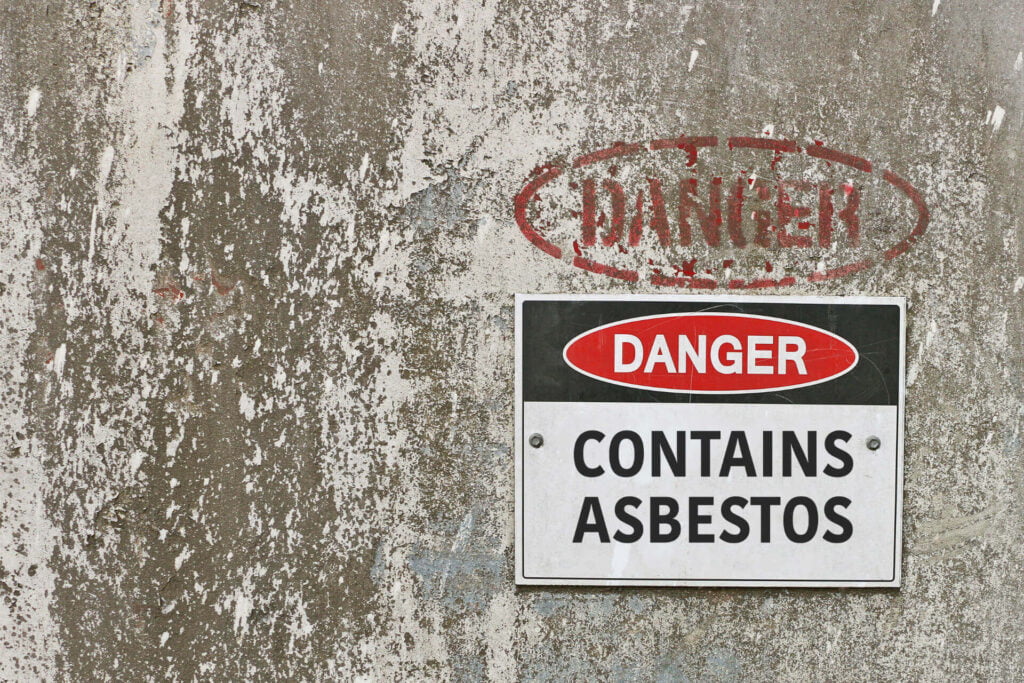Burns are some of the most painful and can frequently lead to lasting disfigurement and disability. Sadly, burn injuries are very common. The CDC estimates that each year, approximately 1.1 million people suffer burn injuries in the U.S., and according to the National Library of Medicine, approximately 15% of those are a result of a work-related incident. In this article, we will discuss burn injuries and which professions put people at the highest risk of sustaining burns.
Want to learn more about burn injuries or need help recovering compensation after a work-related burn? Call Slater & Zurz at (888) 534-4850 to arrange a free consultation with a top burn injury lawyer in Ohio.
Ohio Burn Injuries
A burn occurs when heat, sunlight, chemicals, electricity, or radiation damage the skin or underlying tissue. Burns are classified into three different categories or degrees based on the severity of the injury. First-degree burns are the least severe and can heal within a few days, while third-degree burns are the most serious and can cause permanent disfigurement and disability.
First-degree Burns
These burns only affect the outer layer of the skin. The symptoms of a first-degree burn include pain, swelling, and redness. Typically, these burns can be treated at home and leave no permanent scarring. Sunburns are one of the most common types of first-degree burns.
Second-degree Burns
People who suffer second-degree burns sustain injuries to the first and second layers of skin. Symptoms include intense pain, red or white skin, swelling, and blisters. Second-degree burns can often be treated at home, although some of the more severe cases require medical attention. Permanent scarring is possible, especially when the burn is especially deep.
Third-degree Burns
Third-degree burns are the most severe, causing damage to both layers of skin and the underlying tissue. These burns, when severe, can even cause damage to bones, muscles, and tendons. Medical care is needed to treat third-degree burns, which may include debriding the wound, administering IV fluids, skin grafting, and reconstruction surgery.
Jobs That Put Workers at the Highest Risk of Sustaining a Burn Injury
Although burns can occur under a wide range of circumstances, many burns are caused by work-related incidents. Below are some of the professions that put individuals at a much higher risk of suffering a serious burn injury.
Firefighters
It is no surprise that firefighters are at high risk of sustaining burns. Their close proximity to burning buildings, forest fires, burning cars, and explosions can result in severe burns and lung injuries.
Construction Workers
Severe burn injuries are often sustained by those working in the construction industry. Fires and explosions are not uncommon in construction. But many construction site burns are caused by hot pipes, water, steam, tools, equipment, and machinery.
Electricians
Anyone who works with electrical wiring is at high risk of electrical burns. Exposed or faulty wiring can result in an electric current passing through a victim’s body. This electric current can cause extensive damage to the skin, tissue, and organs.
Welders
Working in difficult conditions with tools that create a high level of heat puts welders at high risk of burns on their arms, face, and especially their hands. Just one small movement or mistake can lead to severe burn injuries that can often prevent them from ever working in their field again.
Foodservice Workers
Chefs and others in the food service industry often suffer serious burns. Working with hot liquids, such as oil, grease, water, and steam, as well as hot cooking surfaces, pans, and plates, put them at increased risk of suffering burn injuries.
Truck Drivers
Commercial truck drivers are at an increased risk of burns as a result of truck fires, explosions, and hot engine parts, tires, and brakes. A truck fire or explosion can result from smoking, sparks, punctured gas lines or tanks, electrical issues, and loss of axle lubricant.
Factory Workers
Those who work at factories or plants can suffer chemical, electrical, and thermal burns. Hot machinery and equipment, scalding liquids, faulty wiring, and exposure to chemicals, such as strong acids, cleaners, gasoline, and ammonia, put factory and plant workers at high risk of burns.
Coal Miners
Coal miners are susceptible to burns because of the significant threat of mine fires. Coal has deposits of methane gas, which, when exposed to extreme heat, sparks, or a flame, can create a fire or explosion.
Seeking Compensation Following a Serious Burn Injury
Individuals who sustain burns as a result of a work-related incident usually can receive workers’ compensation benefits. However, these benefits often do not cover all of their losses. Workers’ comp benefits solely cover an injured employee’s lost wages, medical bills, and some types of rehabilitation therapy.
In some cases, employees are entitled to compensation in addition to the losses covered by their workers’ compensation benefits. Other types of compensation an injured employee might be entitled to include home and vehicle modifications to accommodate for their disability, physical pain and suffering, mental and emotional trauma, disfigurement, and diminished quality of life. If a worker dies as a result of their burn injuries, family members might also be entitled to wrongful death damages.
Ohio’s Leading Burn Injury Lawyers
If you or a loved one suffered burn injuries while on the job, you might be entitled to compensation on top of your workers’ compensation. To learn more about recovering damages following a serious work-related burn injury, call Slater & Zurz.
Our Ohio personal injury lawyers will explain your rights and determine what options are available to you to help you secure much-needed compensation for your losses. Call (888) 534-4850 today to schedule a FREE, no-obligation consultation. We are available 24 hours a day, seven days a week, to take your call.






